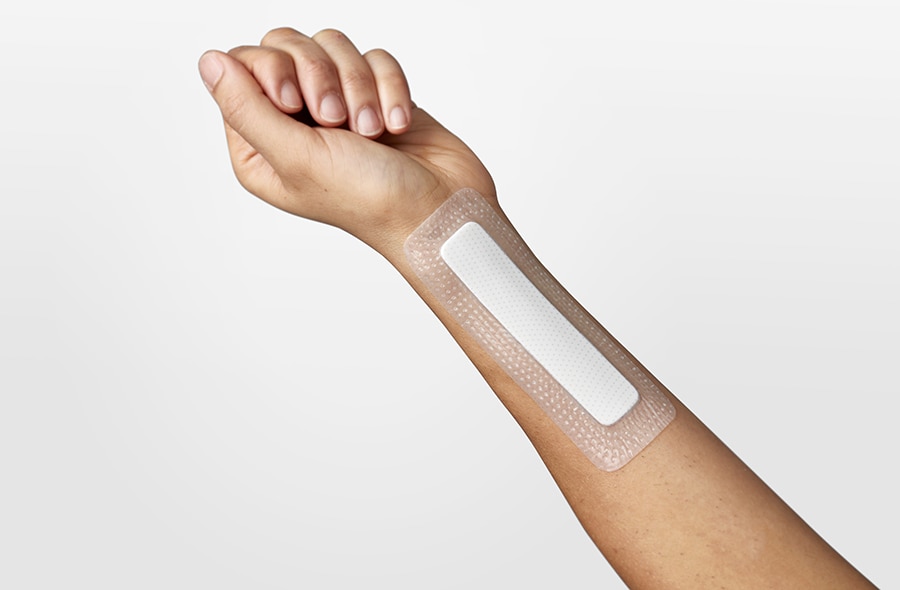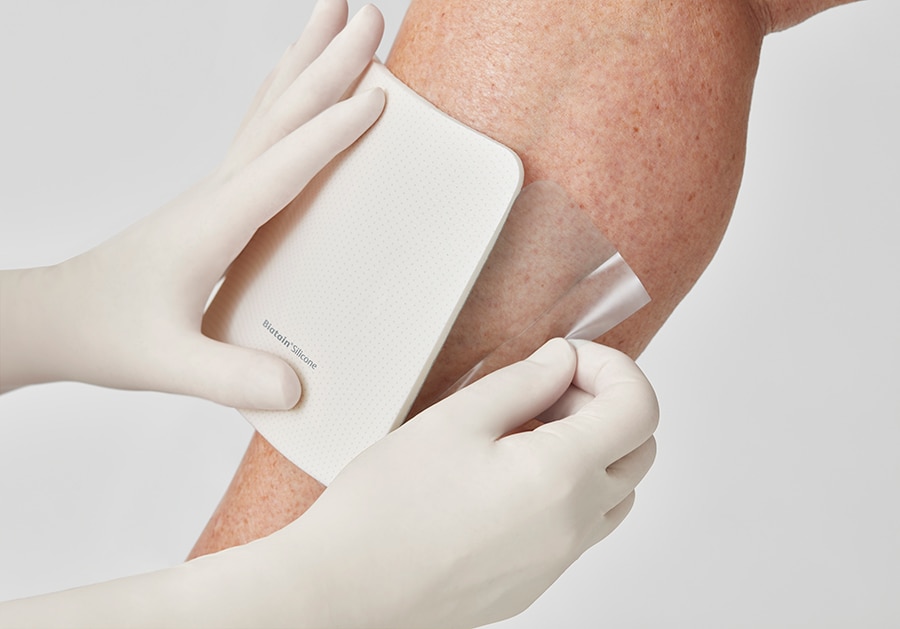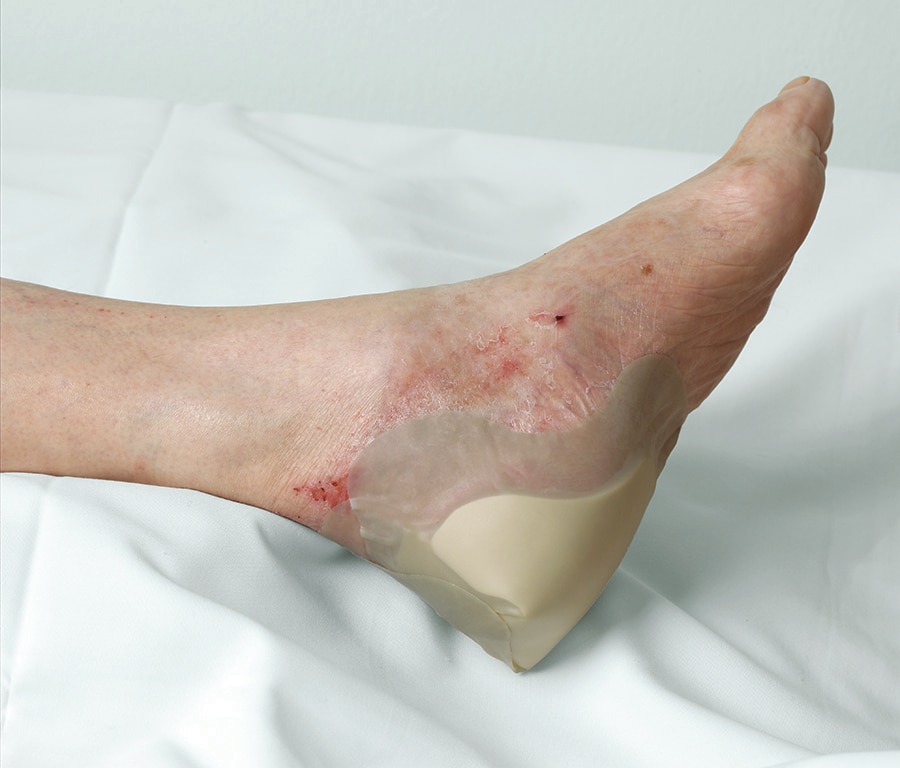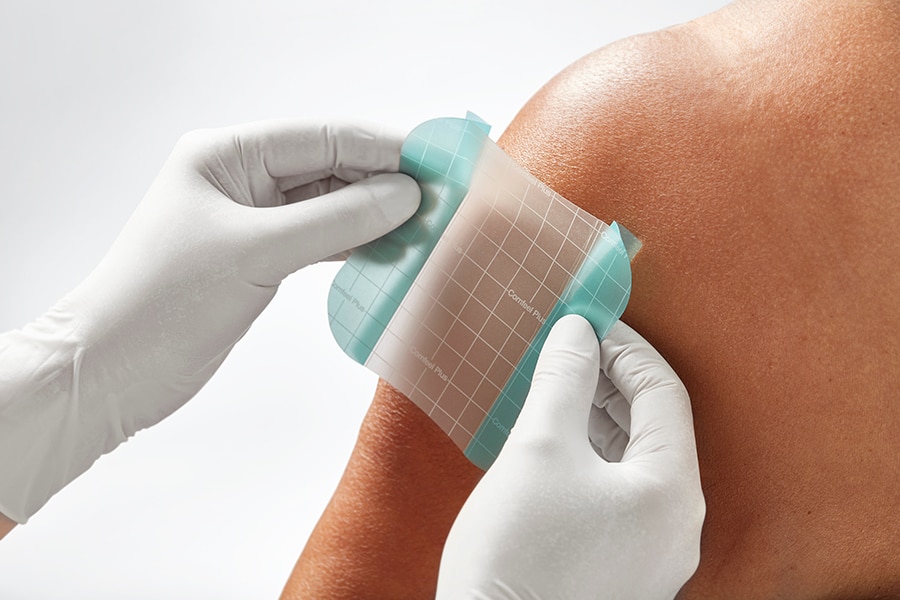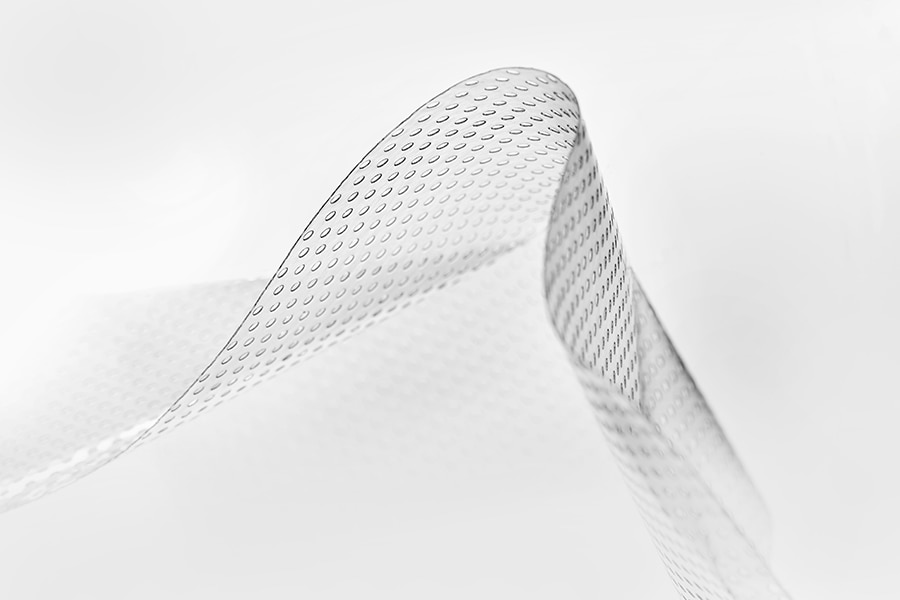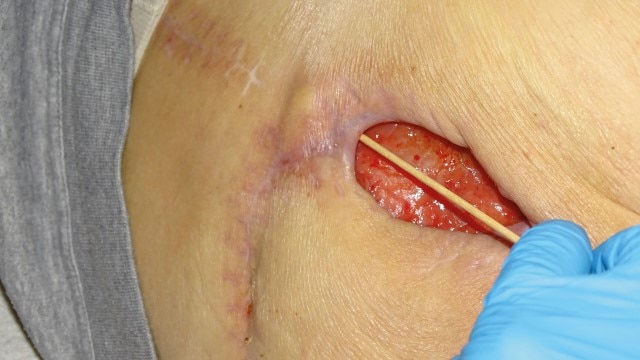
How to use gelling fiber dressings
When should I use a gelling fiber dressing?
Gelling fiber dressings are used for:
- moderately to highly exuding acute and chronic wounds;
- cavity wounds;
- sloughy wounds; and
- wounds with undermining.3
Biatain® Fiber with HexaLock® Technology is the new gelling fiber for all highly exuding, sloughy and cavity wounds, including undermining.
Step 1: Start with a holistic wound assessment
As a part of your assessment, you should look at the wound’s:
- depth;
- undermining;
- tunnelling;
- fistulas; and
- exudate.
This will give you the information you need to choose the right dressing for the wound.
TIP: The Triangle of Wound Assessment is a useful tool that can help you conduct a more holistic assessment, taking into consideration the patient’s general state of health and well-being as well as condition of the wound itself.
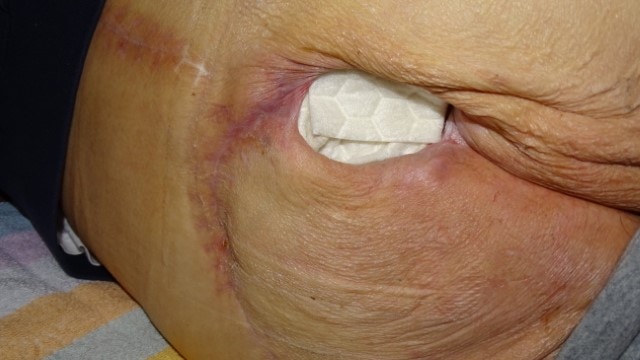
Step 2: Use the gelling fiber dressing as the primary dressing
Gelling fiber dressings are primary dressings. They are designed to be in direct contact with the wound bed. You can choose between a flat sheet for a shallow wound, or a rope for wounds with deeper cavities. You can also use a combination of a flat sheet and a rope.3 You should select a size that fits the wound and cut if necessary.
When you use a gelling fiber dressing on a deep or cavity wound, your goal should be to fill the entire wound cavity with the gelling fiber. Gently press the dressing in place, making sure to fill in any tunnels or undermining in the wound. This will help you avoid a gap between the dressing and the wound bed.
TIP: For gelling fiber dressings to work optimally, they need to cover the wound bed surface.
The greater the area of the wound bed surface that is in direct contact with the gelling fiber dressing, the better the dressing will be able to absorb the exudate and avoid pooling.3 You also want to make sure the secondary dressing stays in contact with the gelling fiber dressing.4
Step 3: Apply the secondary dressing as needed
The type of secondary dressing you choose will depend on the wound. In wounds that have high amounts of exudate, you might choose to use a silicone foam dressing as the secondary dressing. This could provide additional vertical absorption.
Step 4: Assess the wound and dressing at each dressing change
Each dressing change gives you the opportunity to assess the wound and the dressing. By examining the dressing, you can see how it’s performing and examine the exudate.1
To learn more about what to look for when you’re changing the dressing, visit the exudate management section.
How do I select the right gelling fiber dressing?
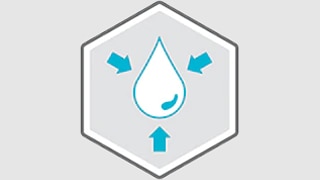
Absorption
One important function of a gelling fiber is its ability to retain exudate, ensuring that it does not leak back into the wound or on periwound skin.
The unique HexaLock Technology integrates the gelling fibers in a reinforced hexagon net, giving Biatain Fiber the strength to lock in exudate to reduce exudate pooling for optimal healing conditions.
The wound’s position can affect how well a gelling fiber dressing absorbs exudate.5
Wounds with high exudate levels have a greater chance of leaking through the lower part of the dressing due to gravity. With leg injuries, the distal (or lower) part of the wound and periwound skin are particularly in danger. That’s why it’s important that the gelling fiber dressing can absorb exudate, even when the wound is in a vertical position.4

Minimal shrinkage
If a gelling fiber shrinks when absorbing exudate, gaps between the dressing and the wound bed create space for exudate pooling.
Biatain Fiber also conforms to the wound bed and thanks to HexaLock Technology, the dressing will keep in shape when used, minimising the risk of gap creation and exudate pooling.
Gelling fiber dressings are designed for wounds with moderate to high exudate levels. However, some gelling fibers shrink by up to 37% when wet3. Shrinkage of the dressing may create a gap between the wound bed and the dressing, especially in wounds with deep cavities.3 So, it’s important that you select a gelling fiber dressing that has minimal surface shrinkage. This will help you ensure that the dressing stays in close contact with the wound bed.
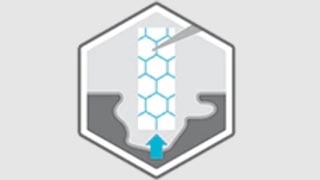
Cohesive gel
Caring for wounds where gelling fibers are indicated is already a challenging and time-consuming process. This challenge increases if the wound dressing disintegrates, requiring a piece by piece removal and creates uncertainty if all residues have been removed.
Biatain Fiber forms a cohesive gel that ensures an easy one-piece removal with minimal risk of leaving residues in the wound.
In cavity wounds you may need to use more force to remove the dressing and may not always be able to see if you've removed everything. If gelling fibers don't maintain their strength when wet, they can break apart when you're removing them. This can leave debris or residue behind in the wound and also take longer ot perform a dressing change.4
Summary - three tips for choosing the right gelling fiber dressing
When you choose a gelling fiber dressing, make sure:
- it absorbs and retains large amounts of exudate;
- it has minimal surface shrinkage; and
- it’s easy to remove in one piece and that it doesn’t leave residue in the wound bed.
References
- World Union of Wound Healing Societies (WUWHS), Consensus Document. Wound exudate: effective assessment and management. Wounds International, 2019
- Gelling Fiber Wound Dressings – WoundSource. https://www.woundsource.com/product-category/dressings/gelling-fiber-dressings
- NHS Clinical Review: Gelling Fibre Dressings (V2) 01.2018
- Tonny Karlsmark et. al. A new reinforced gelling fibre to reduce exudate pooling, Wounds International, vol 3. 2020

